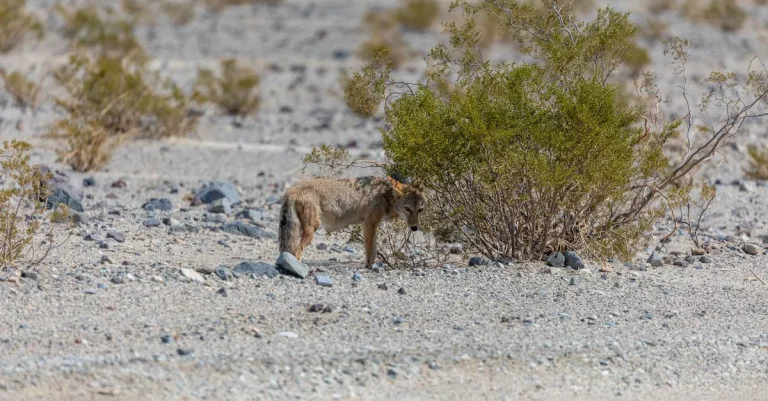Has It Ever Snowed In California? Examining The State’S Snowy History
With its sunny beaches, surfing, and near-perfect weather, California hardly seems like a place that would get snow. But believe it or not, the Golden State has seen its fair share of snowflakes over the years.
If you’re short on time, here’s a quick answer: Yes, it has snowed in California, mainly in the mountains and at higher elevations in Northern California and the Sierras. Major cities like San Francisco and Los Angeles have recorded snow.
California’s Diverse Geography and Climate
California is known for its diverse geography and climate, ranging from sunny beaches to towering mountains. This unique combination contributes to the state’s varied weather patterns, including the occurrence of snowfall in certain areas.
The state’s geography plays a significant role in determining where and when snow can be found.
Varying Elevations Allow for Snow
One reason why California experiences snow is due to its varying elevations. The state is home to several mountain ranges, including the Sierra Nevada and the San Gabriel Mountains. These peaks reach high elevations, providing the necessary conditions for snowfall.
In fact, the highest point in California, Mount Whitney, stands at an impressive 14,505 feet (4,421 meters) and is often covered in snow during the winter months.
Furthermore, the presence of the Pacific Ocean also influences California’s snowfall. Cold winter storms originating from the Gulf of Alaska move southward, bringing precipitation that can turn into snow when temperatures drop.
As these storms encounter the mountain ranges, they are forced to rise, causing the moisture to condense and form snowflakes.
Northern vs. Southern California Weather Patterns
Another factor that affects snowfall in California is the distinction between weather patterns in the northern and southern regions of the state. Northern California generally experiences colder temperatures due to its proximity to the cooler Pacific Northwest.
This makes it more likely for areas such as Lake Tahoe and the Shasta Cascade region to receive snowfall during the winter.
On the other hand, Southern California tends to have milder winters, with snowfall being a rarer occurrence. However, there have been instances where snow has surprised residents in areas such as the San Gabriel Mountains and even parts of the Los Angeles metropolitan area.
These occurrences are often met with excitement and wonder, as they are not a common sight in the region.
It is important to note that while snowfall can be found in California, it is not as frequent or abundant as in states with colder climates. Nonetheless, the state’s diverse geography and climate allow for the occasional snowy surprise, adding to the beauty and variety of California’s natural wonders.
Notable Snow Events and Storms
San Francisco’s ‘Great Snowstorm’ of 1882
While California may not be the first place that comes to mind when you think of snow, the state has seen its fair share of notable snow events. One such event occurred in San Francisco in 1882, when the city experienced what is now known as the ‘Great Snowstorm’.
It was an unusual sight to see the typically mild and temperate city covered in a blanket of snow. The storm brought around three inches of snow to the city, which caused chaos and excitement among the residents.
People took to the streets to enjoy the rare winter wonderland, building snowmen and engaging in snowball fights. The ‘Great Snowstorm’ of 1882 remains a memorable event in San Francisco’s history, reminding us that even in the most unexpected places, snow can make a surprise appearance.
Record Snowfalls in the Sierra Nevada Range
When it comes to snow in California, the Sierra Nevada Range is where you’ll find some of the most impressive snowfall records. The Sierra Nevada, which stretches for about 400 miles, is home to numerous ski resorts and attracts winter sports enthusiasts from all over the world.
In fact, the highest annual snowfall ever recorded in California happened in the Sierra Nevada Range. In the winter of 2010-2011, the region received an astounding 810 inches (67.5 feet) of snow. This record-breaking snowfall created excellent conditions for skiing and snowboarding, delighting both locals and tourists alike.
The Sierra Nevada Range continues to be a popular destination for winter sports enthusiasts, thanks to its reliable snowfall and breathtaking mountain scenery.
Memorable LA Area Snow Days
While snow is a rare occurrence in Los Angeles, there have been a few memorable snow days in the area’s history. One such event took place on January 10, 1949, when a winter storm brought snow to the city and its surrounding areas.
It was the first time in over 20 years that Los Angeles had seen significant snowfall. The city was transformed into a winter wonderland, with snow covering iconic landmarks like the Hollywood Sign and the Griffith Observatory.
Residents took advantage of the rare occasion, building snowmen and enjoying the novelty of snow in their typically sunny city.
Another notable snow event in the LA area occurred in February 2019 when a storm brought snow to the higher elevations of the Santa Monica Mountains. The snowfall was particularly significant because it reached areas that hadn’t seen snow in decades.
Locals flocked to the mountains to witness the rare sight and enjoy activities like sledding and snowball fights.
While snow in California may not be as common as in other parts of the country, these notable snow events serve as reminders that the state’s weather can sometimes surprise us. Whether it’s a historic snowstorm in San Francisco or record-breaking snowfall in the Sierra Nevada Range, these events add an extra layer of excitement and wonder to California’s diverse climate.
Regular Mountain Snow vs. Rare Snow Events
Annual Snowfall in the Sierras
When it comes to snow in California, the Sierra Nevada mountain range is the place to be. Known for its stunning peaks and breathtaking landscapes, the Sierras also experience significant snowfall each year. In fact, the Sierras are home to some of the highest snowfall totals in the entire country.
According to SnowBrains, the average annual snowfall in the Sierras ranges from 300 to 500 inches, depending on the specific location. This impressive amount of snow not only provides a playground for winter sports enthusiasts but also contributes to the state’s water supply.
Snow in Unexpected CA Regions
While the Sierras are known for their regular snowfall, California has also experienced rare snow events in unexpected regions. One such event occurred in February 2019 when snowfall blanketed parts of Southern California, including the usually sunny cities of Los Angeles and San Diego.
This unusual occurrence brought joy and excitement to the residents, who took to social media to share their snowy experiences. The spectacle of palm trees covered in a white layer of snow was truly a sight to behold.
Another example of unexpected snowfall in California happened in 1962 when a massive storm brought snow to the coastal city of Santa Cruz. The incident, known as the “Great Snowstorm of 1962,” left residents in awe as they witnessed a rare winter wonderland along the beach.
This unusual event remains a memorable part of California’s snowy history.
These rare snow events serve as a reminder that while California is mostly associated with warm weather and beaches, it is a state of diverse landscapes and climate. From the snowy peaks of the Sierras to the occasional snowfall in unexpected regions, California continues to surprise and delight both residents and visitors alike.
Impacts and Effects of California Snowstorms
When snowstorms hit California, they can have significant impacts and effects on various aspects of the state. From agriculture and water supply to infrastructure and transportation, and even recreation and tourism, snowstorms can create both challenges and opportunities for different sectors.
Agriculture and Water Supply
Snowstorms play a crucial role in California’s water supply, especially in the Sierra Nevada Mountains. The snowpack that accumulates during winter acts as a natural reservoir, slowly melting and releasing water during the warmer months.
This water is vital for agricultural irrigation and helps replenish reservoirs and groundwater supplies.
However, excessive snowfall can also pose risks to agriculture. Heavy snow can damage crops and disrupt farming operations. In extreme cases, it can lead to crop loss and financial hardships for farmers.
Additionally, the sudden melting of snow can cause flooding, which can further impact agricultural lands.
Infrastructure and Transportation
When snowfall exceeds normal levels in California, it can have significant implications for infrastructure and transportation. In regions where snow is not a regular occurrence, such as Southern California, even a small amount of snow can cause chaos and disruptions.
Roads become slippery, making driving hazardous. This can lead to accidents, delays, and road closures. Airports may also experience cancellations or delays due to poor visibility and snow removal efforts.
Public transportation systems, such as buses and trains, may also be affected, causing inconvenience for commuters and travelers.
Recreation and Tourism
Snowstorms in California bring joy and excitement to outdoor enthusiasts and tourists. The state’s mountainous regions, such as the Sierra Nevada and the Big Bear Lake area, become popular destinations for skiing, snowboarding, and other winter activities.
The presence of snow also boosts tourism in these areas, as visitors flock to enjoy the picturesque landscapes and engage in winter sports. Ski resorts and local businesses benefit from increased patronage, contributing to the local economy.
However, snowstorms can also pose challenges for recreational activities. Avalanches and hazardous snow conditions can endanger the safety of outdoor enthusiasts. Ski resorts and other recreational facilities need to ensure the safety of their guests by closely monitoring weather conditions and maintaining well-groomed slopes.
Overall, while snowstorms in California may bring both advantages and disadvantages, they play a vital role in the state’s water supply, impact infrastructure and transportation, and provide opportunities for recreation and tourism.
Future Outlook: How Climate Change May Affect Snow
As the effects of climate change continue to be felt around the world, it is important to understand how it may impact snowfall in California. The state has a diverse climate, ranging from Mediterranean in the south to subarctic in the higher elevations of the Sierra Nevada mountains.
Changes in temperature and precipitation patterns have the potential to significantly alter the snowfall patterns in the coming years.
Predictions for Sierra Nevada Snowpack
The Sierra Nevada mountain range is a vital source of water for California, providing a significant portion of the state’s water supply through melting snowpack. However, climate models predict that rising temperatures will lead to a decrease in snowfall and an earlier melt-off.
This could have severe implications for water availability and management in the state.
A study conducted by the University of California, Los Angeles, found that by the end of the century, the Sierra Nevada snowpack could decrease by as much as 65%. This reduction in snowpack would not only affect water supply but also impact ecosystems, wildlife, and recreational activities such as skiing and snowboarding.
Increased Drought Conditions
One of the most significant consequences of decreased snowfall is the potential for increased drought conditions in California. Snow acts as a natural reservoir, slowly releasing water as it melts during the warmer months.
Without a substantial snowpack, the state may experience more frequent and severe droughts.
A report by the California Department of Water Resources highlights the link between reduced snowpack and drought conditions. In recent years, the state has already experienced prolonged periods of drought, and climate change could exacerbate this issue in the future.
It is crucial for water management strategies to adapt to these changing conditions and prioritize conservation efforts.
Adapting for Less Snow
In light of the potential decrease in snowfall, California will need to adapt its water management strategies and prioritize conservation efforts. This includes investing in infrastructure to capture and store rainfall, implementing water-saving measures in agriculture and urban areas, and promoting efficient water use.
Additionally, communities and industries that rely on snow for economic activities, such as winter tourism, may need to diversify and find alternative sources of income. This could involve promoting year-round outdoor activities, expanding tourism offerings beyond winter sports, and investing in other sectors of the economy.
It is important to note that while climate change poses significant challenges, there is still time to take action and mitigate its impacts. By reducing greenhouse gas emissions and adopting sustainable practices, we can work towards a future where snowfall in California is preserved and the state’s water resources are protected for generations to come.
Conclusion
While the sunny stereotype of California makes snow seem foreign, winter weather has definitely made appearances over the state’s history. From dusting the palm trees of L.A. to piling feet-high in the Sierras, snow continues to be an integral part of California’s diverse climate.
So next time you picture sunny California, remember that snow is still possible, especially up in those mountains!








